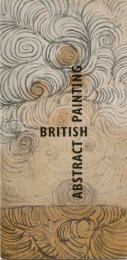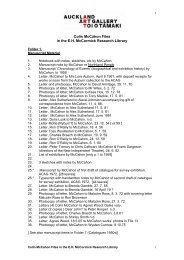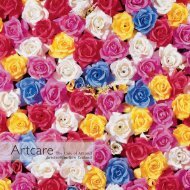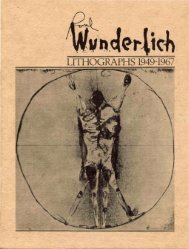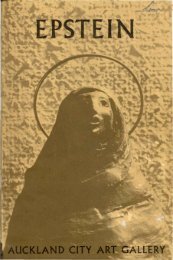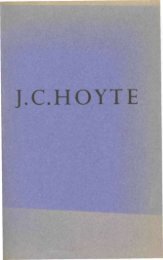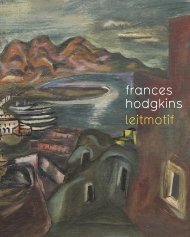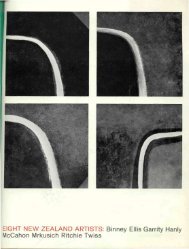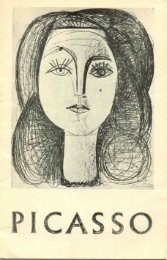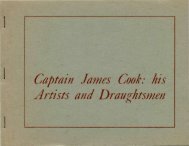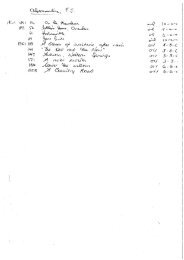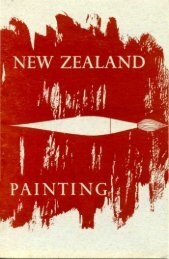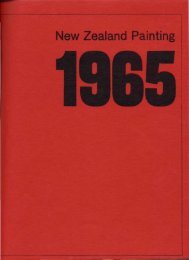Untitled - Auckland Art Gallery
Untitled - Auckland Art Gallery
Untitled - Auckland Art Gallery
You also want an ePaper? Increase the reach of your titles
YUMPU automatically turns print PDFs into web optimized ePapers that Google loves.
exhibited in the following year, are a further consolidation of a non-naturalistdirection. Don Binney's Pipiwharauroa, late Summer, despite its regionalistovertones also makes a contribution to this direction, stressed in the next yearwith his Pipiwharauroa mating.From 1964 some influence of the Pop movement began to make itself felt.However the hard-edge and direct imagery of Pop was not by any means analien influence and it was this aspect of the style, rather than its basic philosophy,which made it accessible to the younger painters. Although quite falsely,MeCahon's 1947 religious paintings. Don Binney and even Rita Angus wereseen as regional prototypes. Ross Ritchie's Four Days provides a good exampleof the immediate results of this influence.Perhaps the most important paintings exhibited during 1964 were the Figuresin Light series of Patrick Hanly. They represent clearly the real changes that hadoccurred in New Zealand painting as well as indicate a new degree of professionalism.At the same time MeCahon's Waterfalls, based initially on theNew Zealand landscapes of William Hodges in 1773, provide a possibly definitivecommentary on landscape painting. More importantly this series, like theearlier Gate paintings, represents a non-naturalist use of landscape elementsnew to New Zealand painting. They have as their underlying impulse a symbolicapproach to light, implied by the zen koan inscribed on the Waterfall muralin the Otago University Library: "Because there is a constant flow of lightwe are born into the pure land".Although figurative painting has never entirely lost its dominance (developmentsin 1967 which are outside the scope of this exhibition suggest it mighthave acquired new impetus), abstract painting played an increasingly importantrole from 1965. A major contribution was made by Don Peebles, MilanMrkusich and Gordon Walters, while the return of Ralph Hotere from Europeand the work of the younger painters, John Perry, Ross Ritchie, PaulineThompson and Philip Trusttum was also significant. With a few exceptionsthe non-figurative painters worked in a hard-edge and, lately, a minimal style.It is interesting to note that Louise Henderson, while responding to very differentinfluences, had exhibited hard-edge abstractions in 1958 and 1959, andhad subsequently abandoned the style in the face of critical indifference.To discuss painting in New Zealand in terms of common characteristics hasoften been dismissed as merely a self-conscious attempt to foster some kind ofcultural nationalism. But as Bryan Robertson has pointed out, nationalism isa militant form of provincial insecurity while national characteristics shouldbe recognised and cherished in all the arts. Developments in painting since1958 have revealed, or so it seems, some apparently common characteristics.Whether these amount to a regional style remains to be seen, but apart fromtheir own significance they have also made it possible to see similar elementsin earlier New Zealand painting. At least it can no longer be asserted, as it sooften has, that painting here has had no internal development. Nor can it beargued that New Zealand painters merely follow current developments elsewhere.While influence from outside is both healthy and inevitable it is alsoselected, refined or rejected, in relation to existing directions. For this reason,perhaps, American painting provides a far more relevant parallel to our ownthan any European school, a parallel suggested as early as 1880.Hamish KeithSizes are given in inches, height before width. Unless otherwise statedworks have been lent by the artist.



